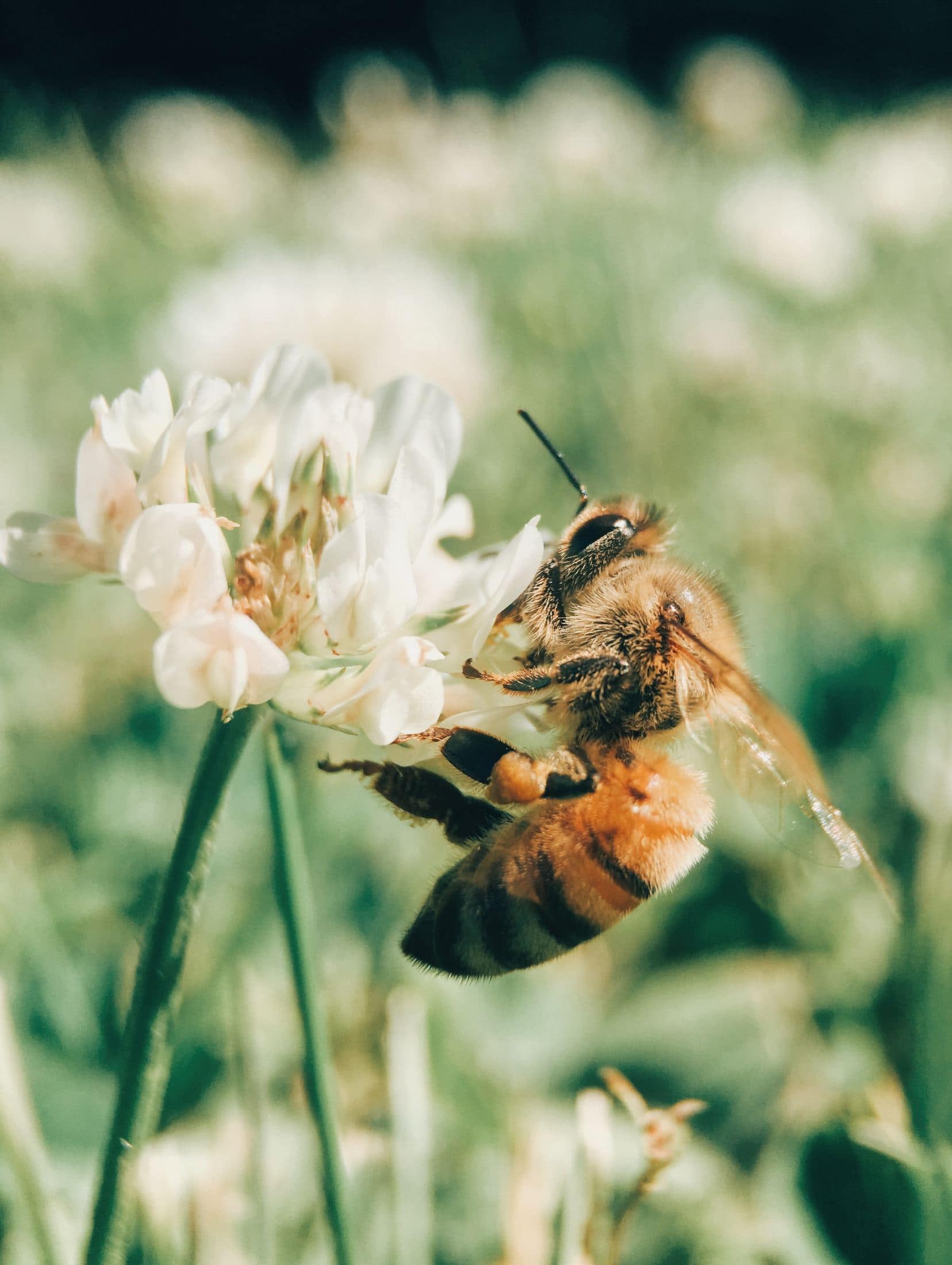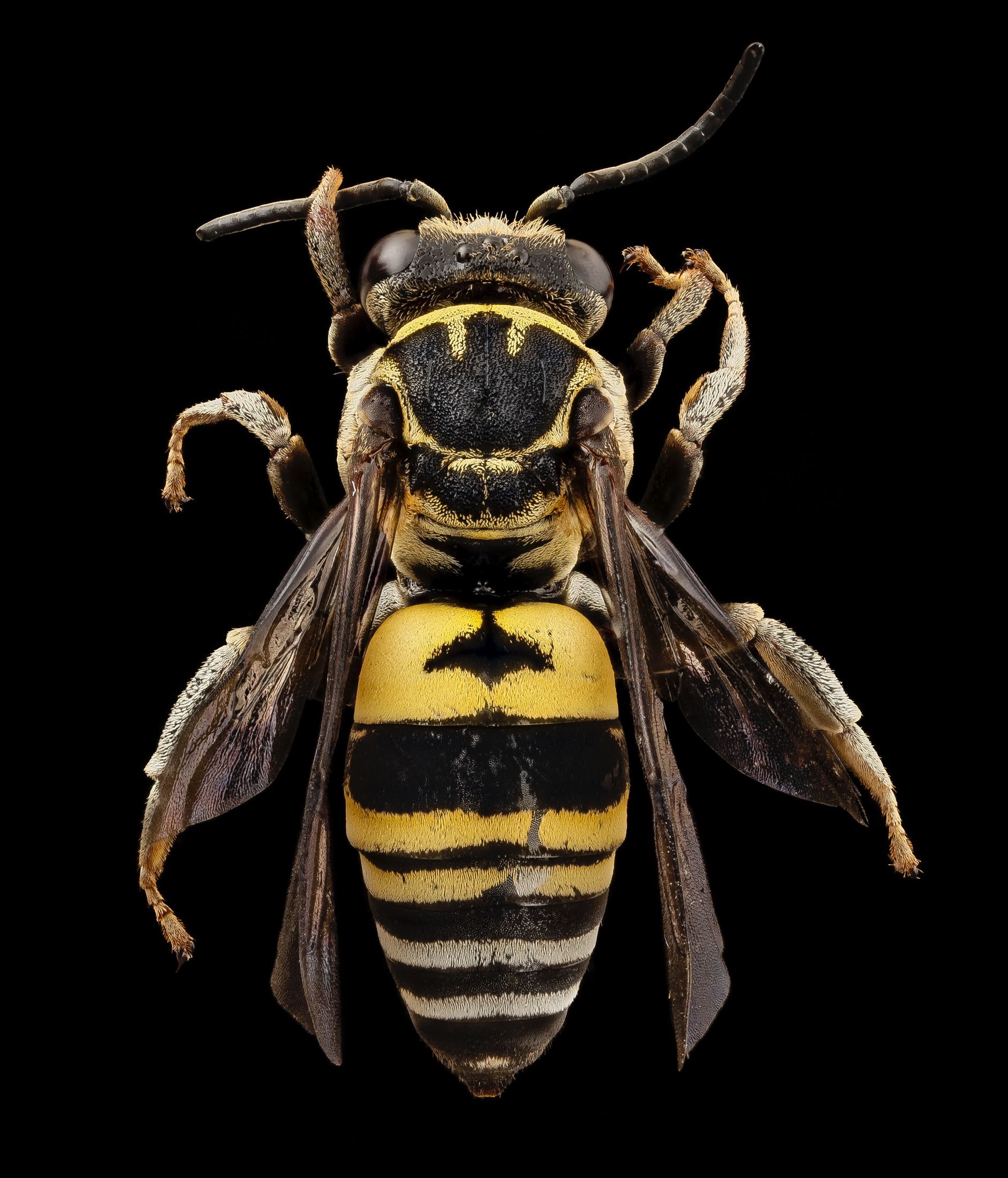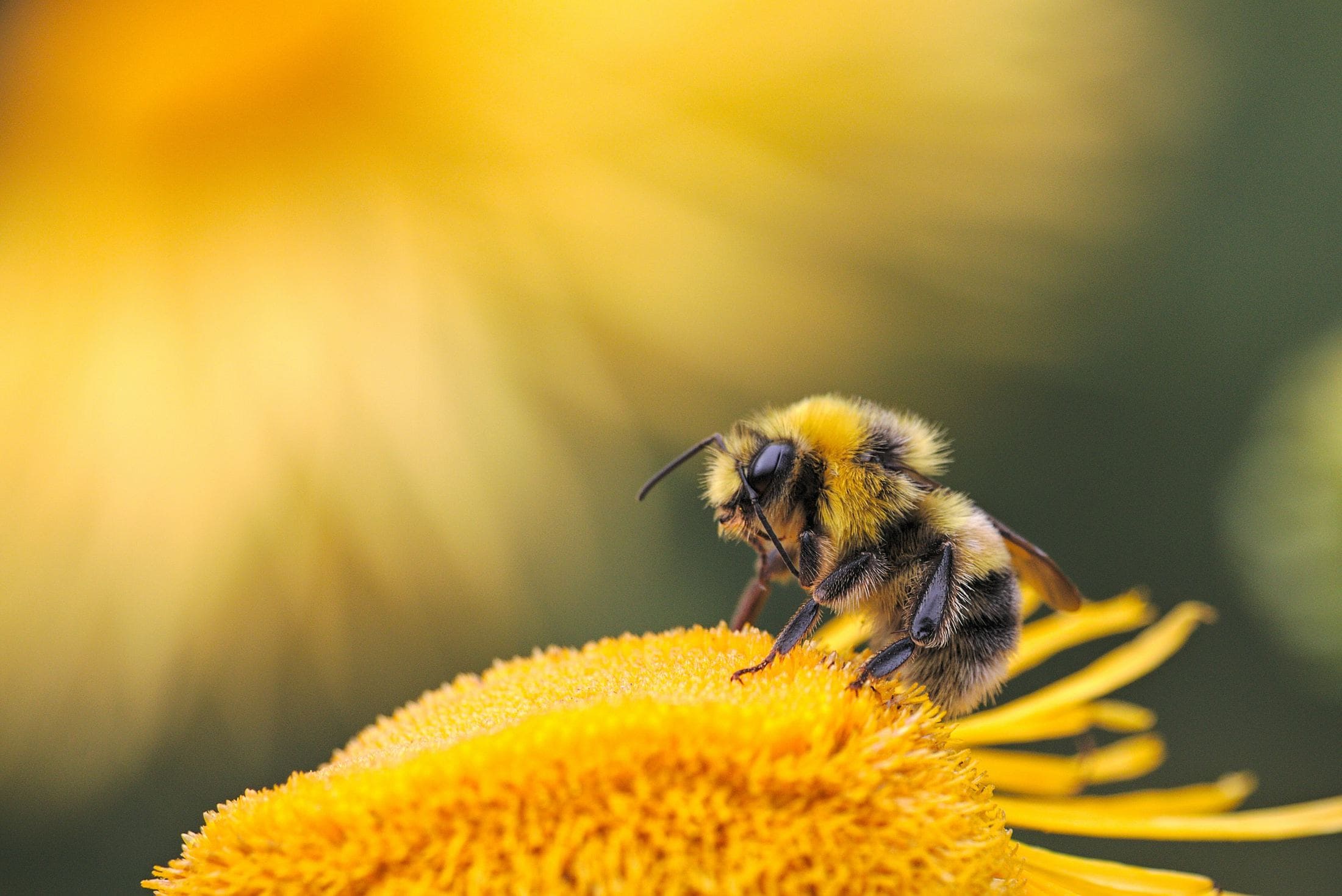Bees are insects closely related to wasps and ants, and they’re best known for pollination. There are over 20,000 species of the bee with 7-9 recognized families, but many remain undiscovered.
Bees are found on every continent except Antarctica.
Habitat
All bee colonies begin with a single queen that has mated with multiple males during her nuptial flight season (a time when she leaves the colony to mate). Except for their reproductive organs and wings , queen bees are otherwise incredibly similar to worker bees. A queen lays around 2000 eggs per day throughout her life span to perform all other duties associated with her role in the colony. These egg cells mature into larva within around 3 days, and the queen will live for up to seven years if she’s not harmed.

Bees live in various habitats but prefer sunny locations with flowers for both nectar and pollen. Most ho-hum bees are generalists, visiting many different types of flowers for food depending upon the season and what’s most abundant at any given moment. Some bees have very specialized diets, specializing in particular types of flowers and rarely visiting other species’ blossoms.
Natural Diet
Bees are polylectic (having many food sources). Though their natural diet is mainly nectar, pollen is also important to bees, and they often collect it for consumption or feed to their larvae as food. Bees also use pollen in the construction of beehives through a process called potting.
In addition to collecting nectar from plants and feeding on pollen, some bees occasionally visit animal droppings (bears are prevalent) or rotting fruit. Little brown jobs like sweat bees harvest their protein by grabbing onto flying beetles, then biting into them and sucking out the juices! Some bee varieties have even been observed feeding on tiny organisms living in pools of water beneath the surface film.
Bees are equipped with a set of specialized glands known as Rennervate Glands. These organs produce an enzyme regurgitated to digest pollen and other tough foods or materials that they consume. The enzymes liquefy the food material so the bee’s innards can more easily digest it. A few bees have special adaptations related specifically to diet, but most ho-hum bees snarf down whatever they can find at any given moment in time (though some do have preferences).

Insects like mosquitoes are natural predators of bees, and many different varieties will prey upon them, including wasps, spiders, foxes, birds, and even bats.
Bees are very social insects (though not as wildly-packin’ as ants) and live in organized colonies or nests . Typical nest sites include cavities in the ground, hollowed-out trees, hives constructed by humans and other bees, caves, etc.
Queen Bees
Around 10-20% of a queen bee’s eggs develop into drones (male bees). These sub-adult male bees usually emerge from their cells after about 5 days have passed but may take longer depending upon the age of the fertilized egg cell. Drone larvae develop slowly as they are fed via metabolization or liposuction of other adult bees within the colony. After two weeks , most drones are fully developed and will pupate and then begin emerging from their respective cells at around 2 – 6 week intervals . During this time, worker honeybees often choose new queens to replace aging queens in a process known as supersediation.
Drones have no stinger, and their only productive role in the colony is to mate with a new virgin queen during her nuptial flight. The sperm from each drone will live for up to 24 hours within an unreceptive queen’s reproductive tract, so all drones must be present at the nuptial flight if they wish to father future generations of bee colonies. The drone’s sole purpose after mating is simply to die.
Important species: Honey Bee (Apis mellifera)
Honey bees are perhaps best known for their production of honey and pollen but also provide many other benefits through pollination services as one of the most important agricultural insects on Earth; these little bundles of joy are responsible for pollinating an estimated one-third of the food that humans consume . Bees are able to accomplish these feats due to their voracious appetites and unique digestive system.

Females (or workers) within a colony have the same biological needs as males but often do not have any physical need to leave the nest at all. Though they only live for around 8 weeks , most bees will feed on honey throughout their brief lives and are only forced from the hive during swarming events in which a new queen or multiple young queens depart with thousands of worker bees (to found new colonies elsewhere). Only virgin female queen bees possess fully developed ovaries, thus ensuring a constant supply of fertilized eggs within a bee colony.
